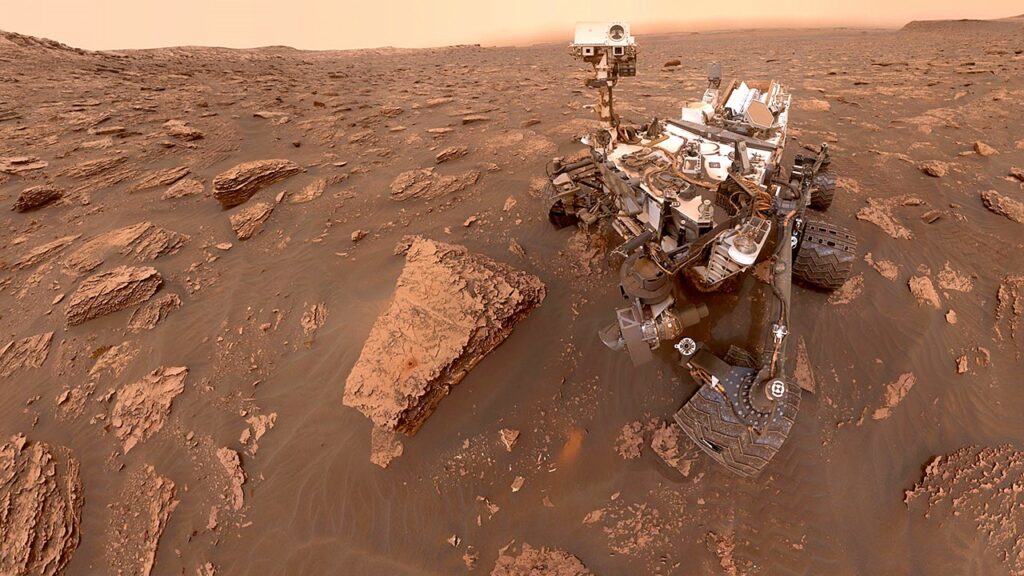NASA’s Curiosity rover has embarked on a fascinating journey within a previously unexplored region on Mars known as Gale Crater. This area has been identified for its unique geological features, including a distinct “boxwork” pattern and indications of ancient waterways such as rivers, lakes, and potentially even an ocean. The rover has been diligently analyzing images and data, which have begun to provoke questions regarding the transformations the Martian surface endured billions of years ago. Yet, despite these intriguing findings, scientists remain puzzled about the ultimate fate of Mars’ water, which eventually receded and left the landscape barren and icy.
Gale Crater serves as a significant site of interest for researchers. Evidence suggests that water once played a vital role in shaping the environment during the crater’s formation. NASA has reported that Curiosity has detected signs of groundwater in the crater, particularly through its discovery of crisscrossing low ridges. Some of these ridges only rise a few inches above the Martian surface and have been characterized by geologists using the term “boxwork” to describe their unique arrangement.
Tumultuous historical processes have shaped these formations. Beneath these ridges lies bedrock formed by groundwater that percolated through rocks, leaving behind minerals that filled existing cracks and fissures. Over eons, these accumulated minerals solidified, creating a cement-like substance. However, continuous Martian winds have eroded the exterior, leading to what NASA described as “eons of sandblasting,” leaving behind only the resilient ridges.
As the curiosity rover continues to explore, it has analyzed these ridges, observing that they resemble crumbling curbs rather than smooth formations. The patterns that stretch across vast areas of Mount Sharp, a towering three-mile-high geological structure, are particularly interesting. The rover has been ascending Mount Sharp since 2014, and throughout this expedition, it has not encountered any other boxwork patterns, either from orbiters observing from above or from previous Curiosity analysis.
Ashwin Vasavada, a project scientist for Curiosity at NASA’s Jet Propulsion Laboratory in Southern California, commented on the enigma of these hardened ridges. “A big mystery is why the ridges were hardened into these big patterns and why only here,” he stated, expressing the team’s commitment to examining the ridges and mineral cements as they move forward.
NASA has revealed that the boxwork patterns are located in an area of Mount Sharp that encapsulates various eras of ancient Martian climate. As the rover ascends from older geological layers to younger ones, it is effectively engaging in a form of time travel. This undertaking allows scientists to search for evidence that water once existed on Mars and to identify the environmental conditions that might have supported microbial life in the planet’s distant past.
During its current exploration, the Curiosity rover has encountered layers abundant with salty minerals known as magnesium sulfates. These minerals typically form as water evaporates, suggesting that this particular layer emerged during an era of diminishing climate conditions. The presence of boxwork patterns indicates that even amidst such dryness, water still influenced the subsurface environment, shaping features that are observable today.
Significant clues uncovered by Curiosity may offer a deeper understanding of why these unique boxwork patterns are situated in their current location. The bedrock between the ridges contains numerous small fractures filled with white veins of calcium sulfate. This mineral signifies the historical presence of groundwater that trickled through rock crevices. Notably, similar veins were prominent in the lower layers of Mount Sharp, but no veins had previously been observed in the higher sulfates until now.
Abigail Fraeman, Deputy Project Scientist for Curiosity at JPL, expressed her surprise at this revelation. She noted that calcium sulfate veins had been widely distributed lower on the mountain but had become increasingly rare as Curiosity ascended. The team’s enthusiasm for understanding why these veins have re-emerged at higher elevations is palpable.
Initially launched on November 26, 2011, and landed on August 5, 2012, the Curiosity rover’s mission revolves around exploring whether Mars possessed suitable environmental conditions for supporting life. Early in its journey, the rover discovered chemical and mineral evidence suggesting the existence of potentially habitable environments from the planet’s earlier history, contributing to humanity’s quest to understand the past and the potential for life beyond Earth.
In summary, the findings from Mars hold promises of revealing significant insights into the planet’s profile, its geological history, and the factors that led to its present state, showing how ongoing exploration can lay the groundwork for future discoveries.











